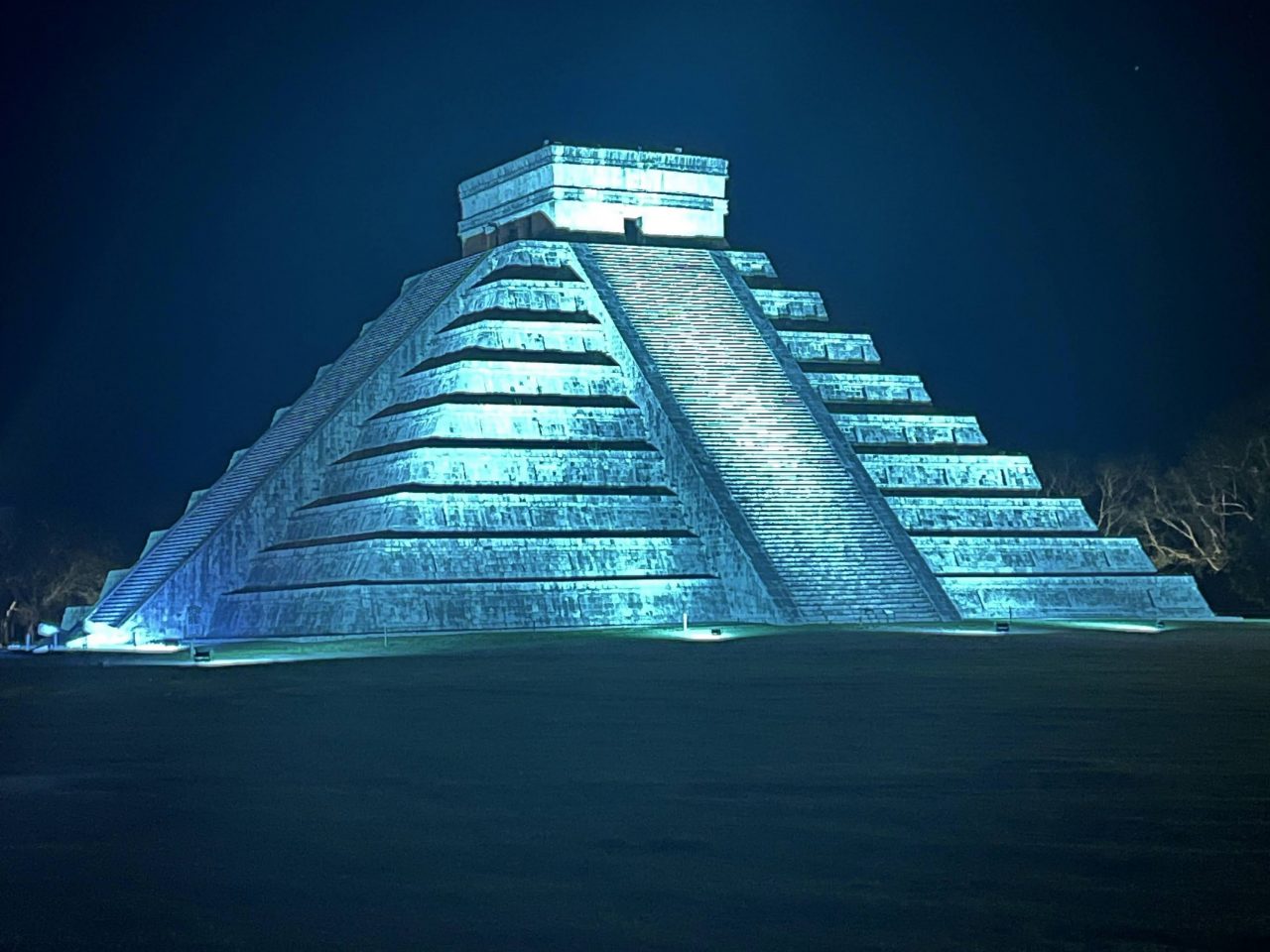This was the 8th time we set up a trip to Mexico and it was the most ambitious trip. Close to 2500 miles and it felt double, because my autopilot failed right after departure. Hand flying a Cirrus is not particularly pleasant, particularly for 30 hours. Our first destination was Brownsville TX, where we met most of the group. One participant elected to fly to Merida from Florida directly, but everybody else flew to KBRO. Initially, we were supposed to have 12 airplanes, but one had engine issues a week before departure, so they elected to join us in Merida flying commercial.
We left on Friday afternoon and flew at 17,500 to cross Sierras and landed at the North Las Vegas airport. Vegas is not our preferred location, but it is a convenient stop to spend the night. The autopilot failed during the initial climb and no amount of circuit breaker pulling made a difference.
Saturday morning didn’t start well. First, when walking to the airplane I noticed that I didn’t have my iPhone. A quick look at the Find My iPhone showed it happily travelling on a highway back to the city. I have to give it to Apple engineers that they thought about that scenario when they decided that answering a phone call doesn’t require a passcode. The taxi driver pick up and said he was “super busy” and didn’t know when he would have time to bring the phone back. A quick negotiations reversed his priorities.
Then I got a phone call from one participant, whose airplane sustained damage so much so that he wouldn’t be able to join. At that point, we already passed our cancellation deadlines, so we wouldn’t be able to provide him a refund. However, I planned to negotiate with hotels, hoping to recoup at least part of his cost.
We stopped for fuel in El Paso and after a delicious lunch at a local Subway launched for the 2nd leg to Brownsville KBRO, but not before receiving a message from another participant that his alternator 1 failed in flight. That is a required equipment per the Cirrus Kinds of Operation List, and we thought we would loose another airplane.
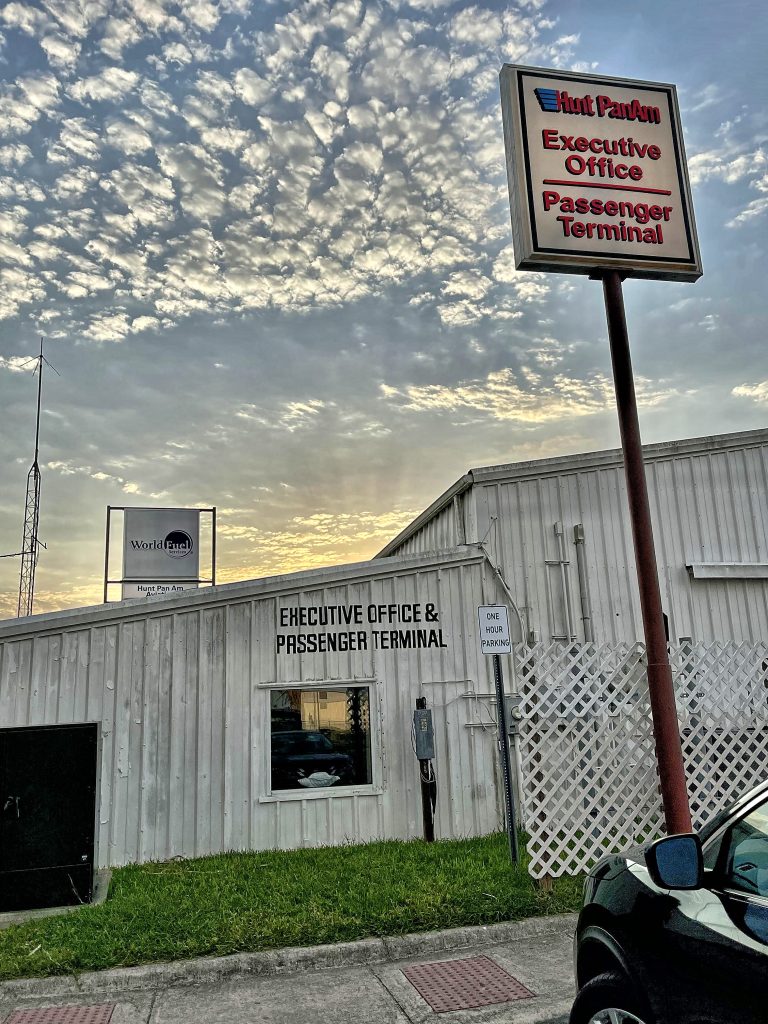
“Executive” terminal in Brownsville
Brownsville isn’t much of a town and I don’t think we will choose it again as a point of departure, in spite of its favorable southern location. Neither Uber nor Lyft had any cars, but we managed to call a local taxi company for a drive to a Courtyard. A local Olive Garden was too busy for our group and we ended in a burger joint.
Next day morning departure confirmed that ALT1 was definitely inoperative, but it turned out that the nearby McAllen had a Cirrus Certified Service Center, obviously closed on Sunday, but reopening on Monday morning. The pilot elected to fly there and in the meantime discovered that it was the field current jumper that snapped. A fix would be easy.
Everybody else departed for a three hours flight to Minatitlan MMMT. My usual stop for that itinerary is Veracruz MMVR, but with 10 airplanes, we needed a handler, so that all our paperwork and in particular multi-entry permits were prepared ahead of time. Few years back we didn’t do that and an entry through Oaxaca was taking hours. Assuming 30 minutes for one permit and 10 airplanes, you can easily see how long it takes if done serially. Veracruz handlers were ridiculously expensive, so we decided to switch to Minatitlan.
Passing through 5000′, I saw 40 knots headwind, but at 11,000′ it was only 12 knots. We were above overcast most of the time on an IFR flight plan. 25 miles from Minatitlan tower said “Below 8000, you are in uncontrolled airspace, cleared for VOR/DME runway 10”. Great, but what about that 6000 feet mountain that I could see on the charts? We managed to descend without hitting anything and executed a full VOR/DME procedure, with a teardrop course reversal in actual conditions. I was glad to be proficient with hand flying.
Our handler in Minatitlan did a splendid job and all processing was done in record time, less than an hour for all airplanes. And that is when we learned that the fuel truck was not working. The only fuel truck. A specialist was called and after half an hour, he managed to fix it. In the meantime, , e looked at other options, but we definitely didn’t have enough fuel to get to Merida.
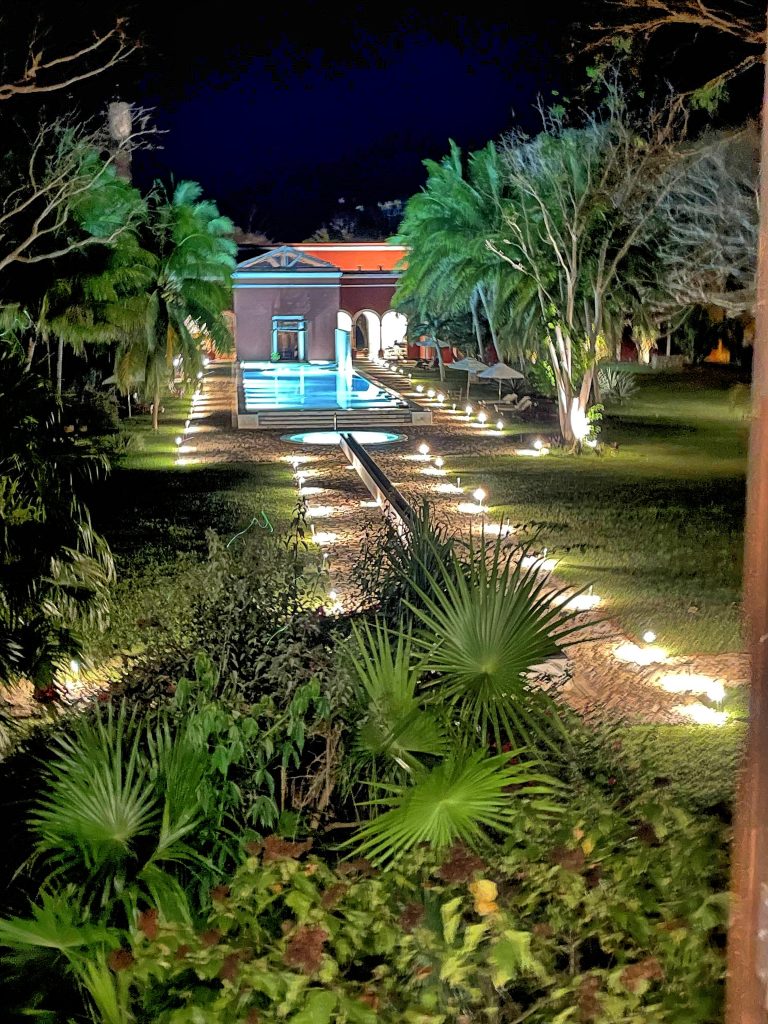
Arrival to Merida was uneventful, we exited the airplane and were picked up by the arranged mini-buses, which drove us to the Hacienda Temozon. A margarita and a nice dinner later, we all went to bed early tired after a long flight.
On Monday a bus picked us at 9 am for visiting of Maya site in Uxmal. It was a 45 minutes drive for a guided tour of the impressively well restored ruins. The site is the most important representative of the Puuc architectural style, which flourished in the Late Classic Period (AD 600–900).
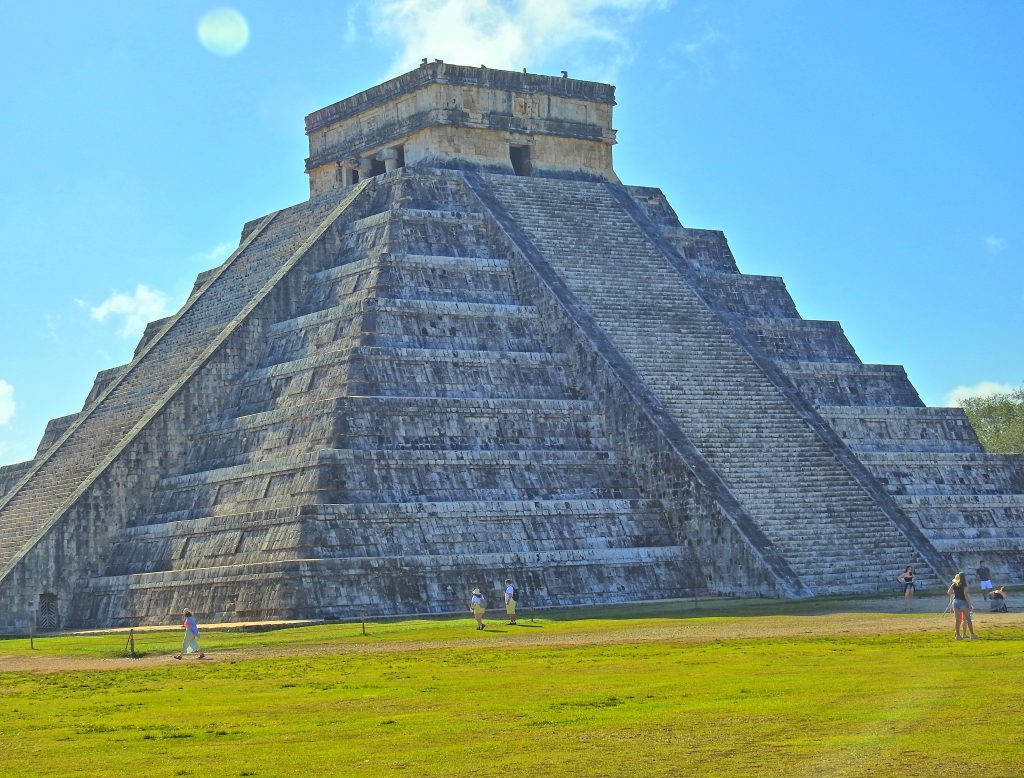
Quite probably this style and the northern Maya lowland culture continued in full vigour for a century or so after the decline and abandonment of the southern Maya lowland centres such as Tikal, Palenque, and Uaxactún. After about 1000, when Toltec invaders arrived in Yucatán and established their capital at Chichén Itzá, major construction in the city ceased. According to Maya hieroglyphic records, however, Uxmal continued to be occupied and was a participant in the political League of Mayapán. When the league ended, Uxmal, like the other great cities of the north, was abandoned (c. 1450). Before abandonment, the ruling family of the city, like the Itzá of Chichén or the Cocom of Mayapán, was the Tutul Xiu.
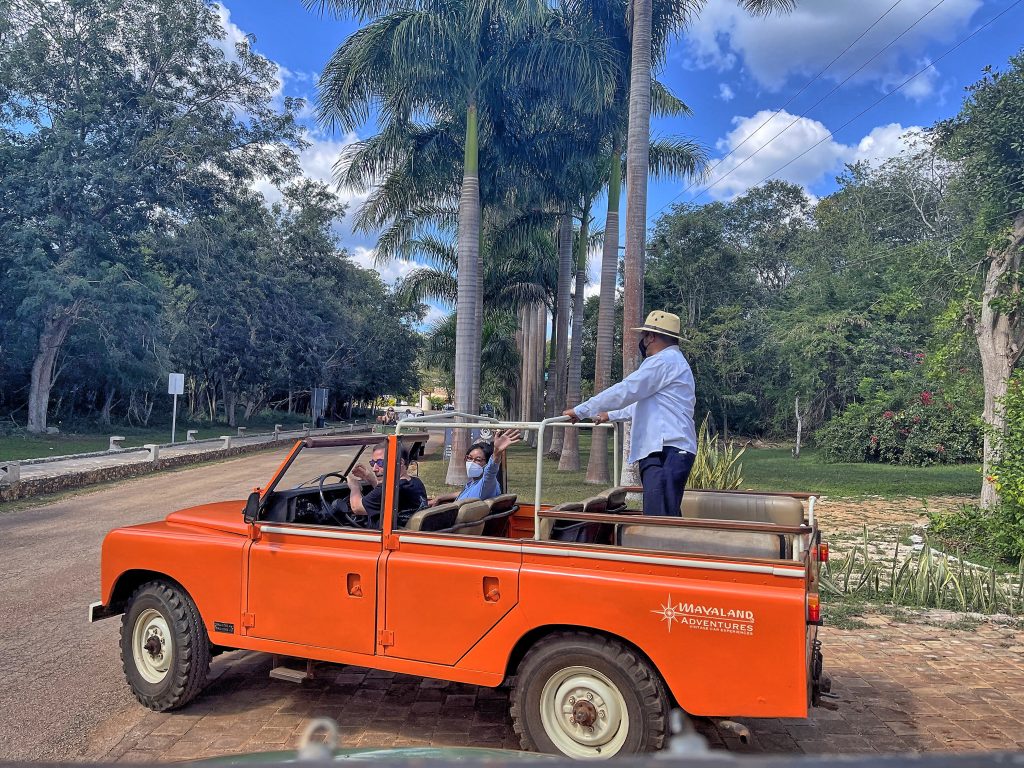
After visiting the site, we had lunch at a local restaurant and ended up with a Land Rover tour of the plantation and ruins of Hacienda Uxmal constructed in 1673.
On Tuesday, we again boarded a bus, which drove us to Merida, for a short tour of the city. Merida, capital state of Yucatan whose heritage is a rich blend of Mayan and colonial was founded in 1542 by Francisco de Montejo on the remains of the ancient Mayan city, called T’hó, which means 5 in the Mayan language.
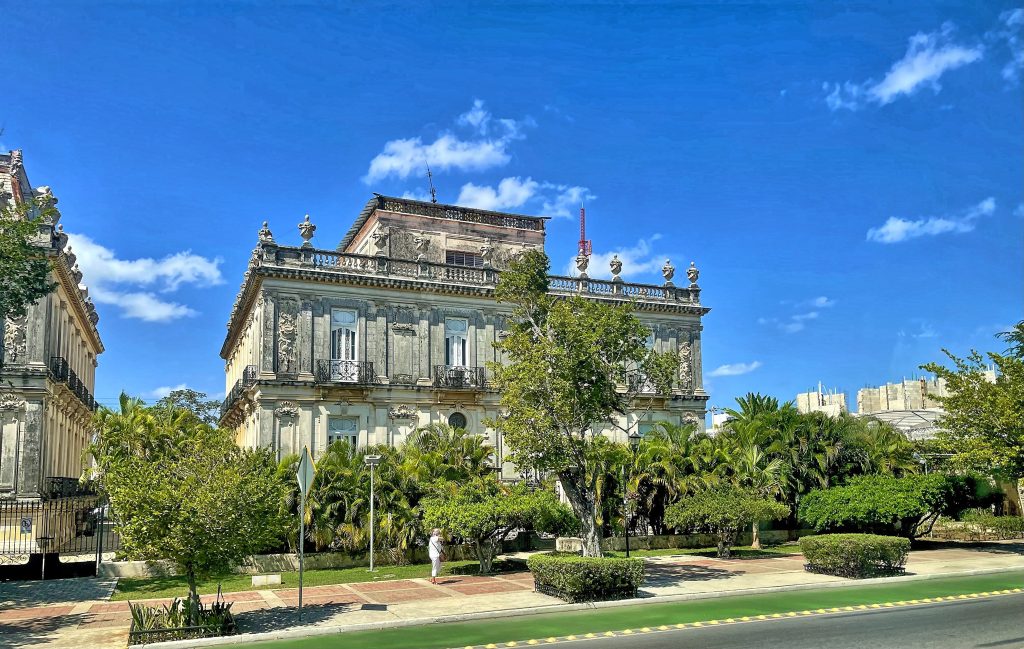
In fact, when he arrived, he found 5 Mayan temples surrounding a huge plaza and resembling the Roman ruins of the city of Merida in Extremadura, Spain, and therefore he adopted the same name. Merida of Yucatan. On our tour of the city, we drove along Paseo Montejo, which is a gorgeous tree-lined avenue stretching from the Santa Ana neighborhood ending with the grand and unmissable Monumento a la Patria. The incredible mansions are a reminder of the wealth that was in the Yucatan during the 19th century. At one point Merida was home to the most millionaires in the world, wealth created by processing and export of locally grown henequen, a fibrous plant from which twine and rope are produced. Our tour of the city ended with a lunch at the Kuuk restaurant.
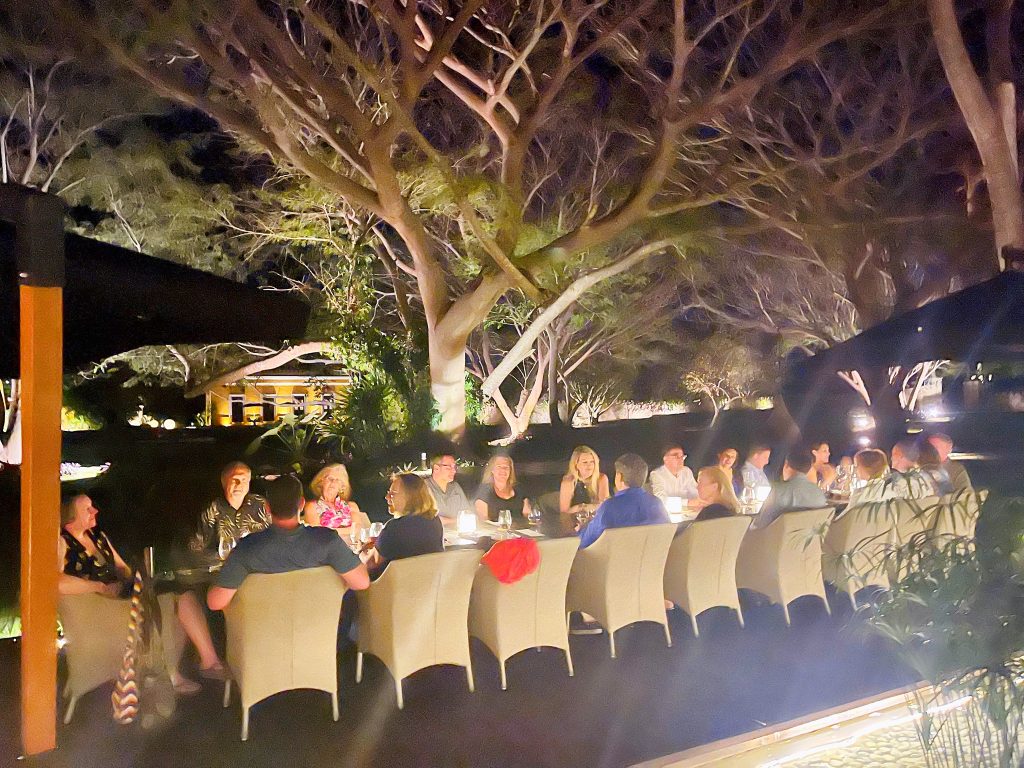
We returned back to Temozon after lunch to rest a little before our dinner escapade to Ixi’im restaurant at the Hacienda Chablé. Overseen by chef Jorge Vallejo (whose Mexico City restaurant Quintonil was named one of the World 50 Best), using organic, seasonal ingredients that are often sourced from the expansive on-site gardens; Ixi’im is lit up like a jewel box at night. Set among trees, the stone ruins of one of the hacienda’s buildings have been attached to a glass dining room lined with the owner’s 5000-strong collection of vintage tequila bottles.
Wednesday was a short flying day. We boarded again a bus, which drove us back to Merida airport. Departure formalities took surprisingly long considering it was a domestic flight and we all had flight plans prepared. A twenty minutes flight brought us the Chichen Itza airport.
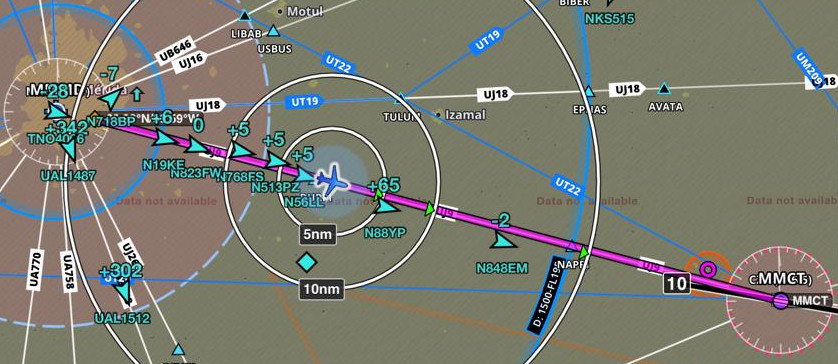
No paperwork on arrival, we boarded a bus to drive to Mayaland hotel for a check in and almost immediately returned to the bus to drive to cenote Ik-Kil. It is arguably one of the most beautiful cenotes of Mexico. The waters of Ik Kil were considered sacred by the Mayans who performed here human sacrificing to their rain god and archaeologists found there bones and jewelries.
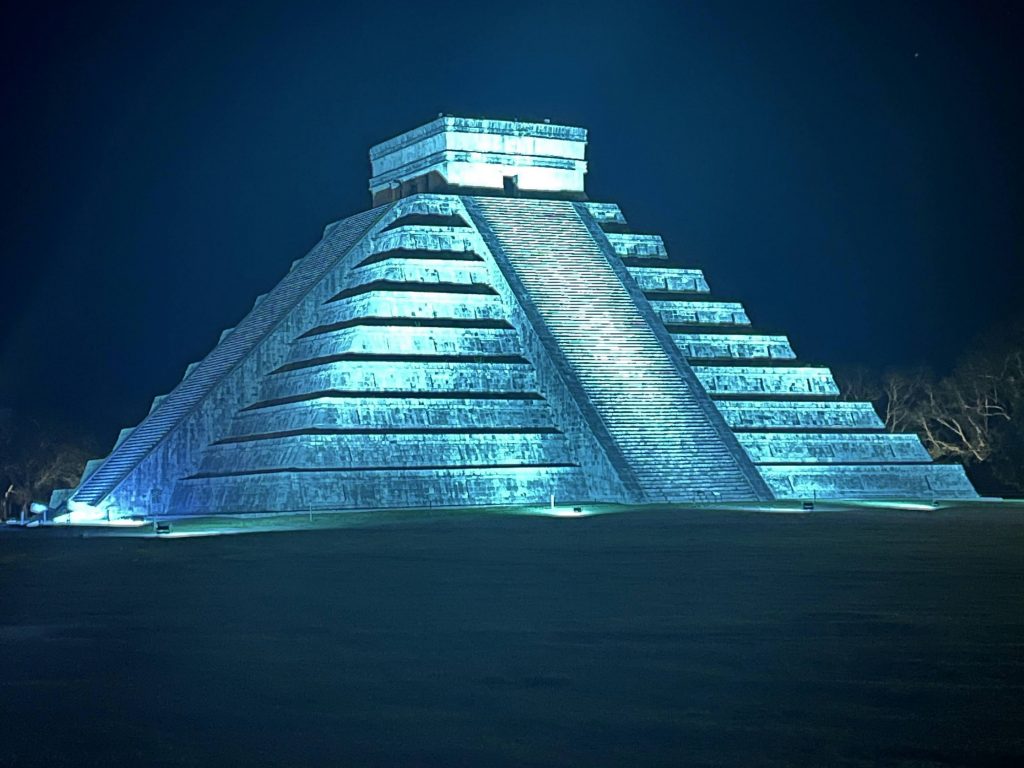
We returned to the hotel for dinner and then drove for yet another attraction: Noches de Kulkulkan, an audiovisual presentation that describes Maya cosmogony, their particular vision about the origin of the planet and of humanity, as well as the history of this place which is one of the New 7 Wonders of the World. The light show was spectacular, pyramids gleaming in bright colors and ancient silhouettes alive projected on main pyramid side.
On Thursday morning, we departed the hotel for a visit proper of Chichen Itza ruins. Chichen Itza was named a UNESCO World Heritage Site in 1988. In 2007, the Temple of Kukulcán at Chichén Itzá has joined such famous architectural wonders as the Great Wall of China, Machu Picchu and the Taj Mahal on the list of the Seven New Wonders of the World. This impressive pyramid symbolizes the grandeur of the Mayan civilization. The greyish white colossus is 30 meters high and has exactly 365 steps to the temple at the top – this was also the number of days in the Mayan calendar.
Historians believe that Chichen Itza was founded and rose to prominence due to its close proximity to the Xtoloc cenote, an underground source of fresh water. The name Chichen Itza is a Mayan language term for at the mouth of the well of the Itza. The Itza were an ethnic group of Mayans who had risen to power in the northern part of the Yucatan peninsula, where the city is located.
After the visit, it was time for another quick flight to Cozumel. Our handler at MMCZ did a great job ushering everybody to exit and calling us taxi. A short ride to the El Presidente hotel brought us two days of sun, beach and do-nothing rest.
On Saturday night, we had a goodbye dinner at the Buccanos Beach Club hosted and invited by a COPA member, who splits his time between Florida and Yucatan. This was the end of the trip and everybody was returning home individually. We chose to stop overnight in San Luis Potosi, we never been to the city and make a second stop in Alamos, to spend a night in Hacienda de los Santos, our favorite place in Mexico.
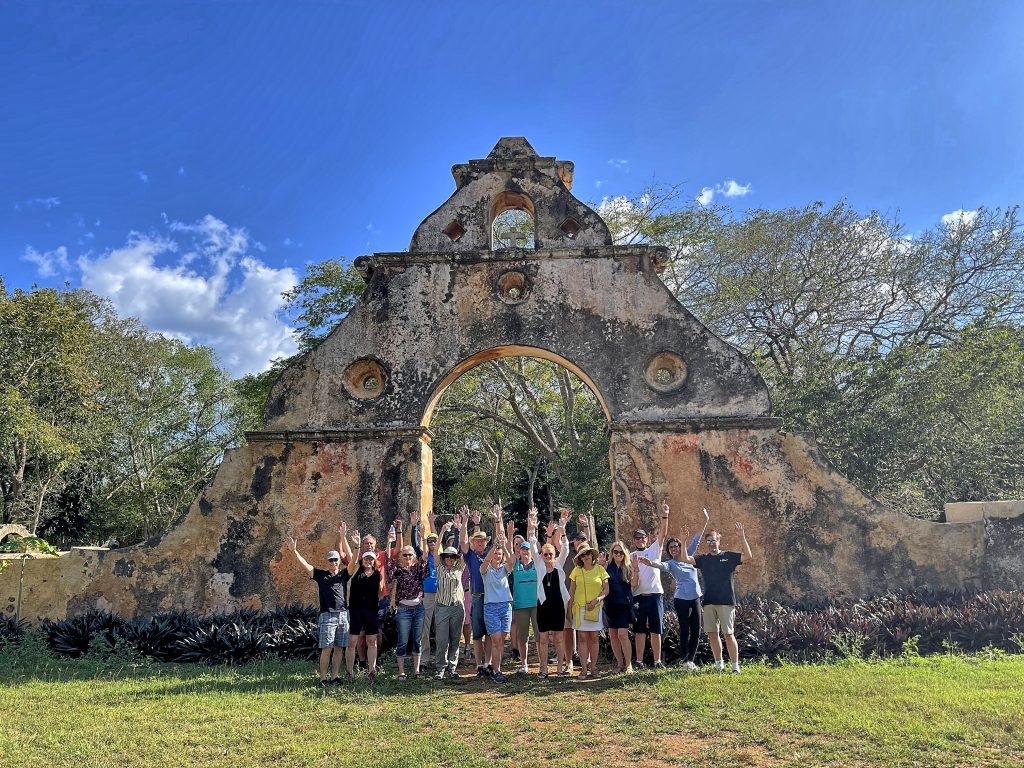
Remember these problems I had with the magneto? I called the avionics shop who did the work on the airplane before departure and asked them is there anything I could do to debug the issue. They said the first thing they would try is to make sure that the autopilot was properly seated in the tray. Departing Alamos, I pushed the autopilot as hard as I could into the tray and everything returned to normal. 25 hours hand-flying the airplane and I could have loved it by a simple push!
